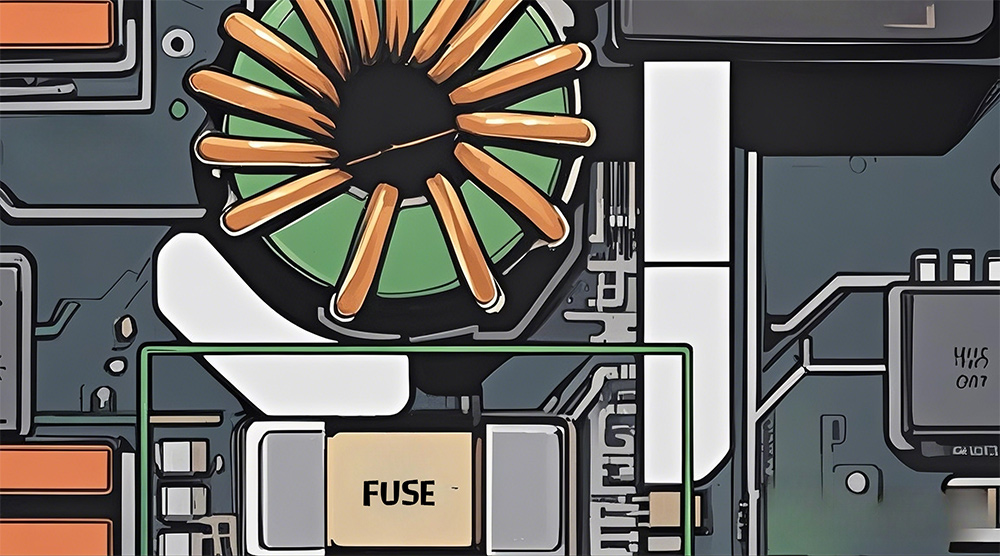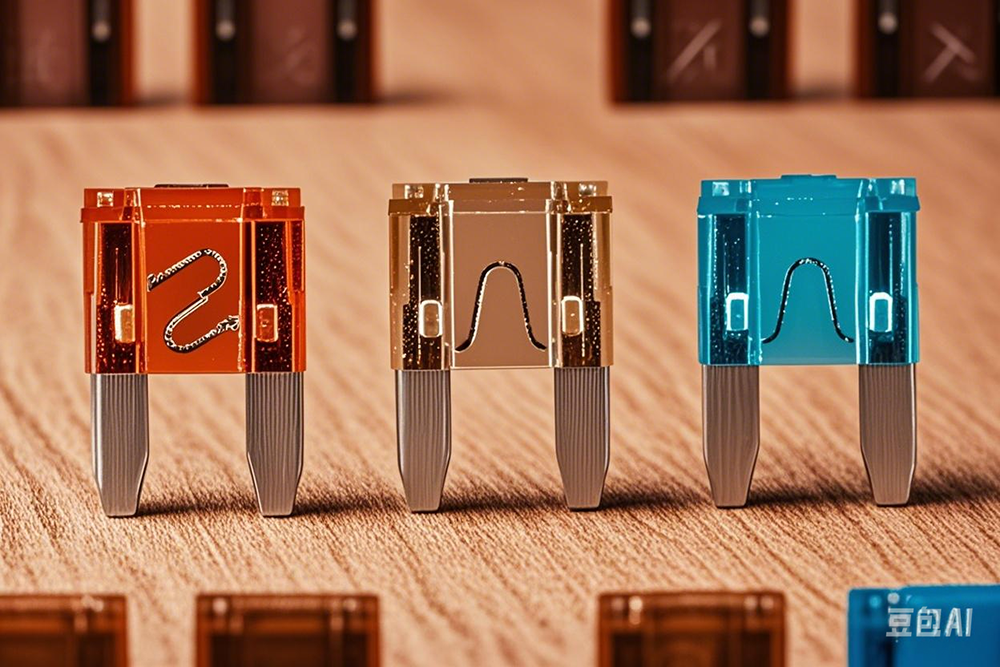
When it comes to circuit protection, the key difference between PTC and fuse types lies in their reusability. PTC resettable fuses automatically reset after a fault, while single-use fuses require replacement. This distinction is vital for lithium battery applications, where safety, reliability, and cost-efficiency are paramount.
- PTC resettable fuses offer cost-efficiency by eliminating frequent replacements. Their compact design and self-resetting capability make them ideal for rechargeable systems like laptops and mobile devices.
- In critical sectors such as lithium battery field, these PTC and fuse options enhance safety by protecting circuits from overcurrent, reducing downtime, and ensuring operational stability.
By choosing the right PTC and fuse type, you can optimize lithium battery performance while safeguarding your systems.
Key Takeaways
- PTC fuses reset themselves after a problem. They are great for things that need to keep working, like electric cars and rechargeable gadgets.
- Single-use fuses are cheap and work well for low-power systems. They are easy to replace after they break.
- Picking the right fuse depends on current, voltage, and use. This helps keep lithium battery systems safe and working well.

Part 1: Understanding PTC Resettable Fuses
1.1 What Are PTC Resettable Fuses?
PTC resettable fuses, also known as polymeric positive temperature coefficient (PPTC) devices, are advanced circuit safety devices designed to protect electronic circuits from overcurrent and over-temperature conditions. Unlike traditional single-use fuses, these fuses are self-resetting protectors that automatically restore functionality after a fault is resolved. This makes them particularly valuable in applications requiring long-term reliability, such as lithium battery packs in consumer equipment and industrial systems.
1.2 How PTC Resettable Fuses Work
PTC resettable fuses operate based on a positive temperature coefficient principle. During normal operation, they maintain low resistance, ensuring minimal impact on circuit performance. When an overcurrent occurs, the fuse heats up, causing its resistance to increase exponentially. This high-resistance state effectively blocks current flow, protecting the circuit from damage. Once the fault is cleared and the fuse cools, it reverts to its low-resistance state, allowing normal operation to resume.
Key operational characteristics include:
- A non-linear relationship between resistance and temperature.
- Two functional states: a high-resistance “tripped” state and a low-resistance “standby” state.
- Automatic resetting without manual intervention.
1.3 Key Features of PTC Resettable Fuses in Circuit Protection
PTC resettable fuses offer several advantages for circuit protection:
- Longevity: Their resettable nature ensures extended usability, reducing maintenance costs.
- Reliability: They provide consistent over-current protection, safeguarding sensitive components in lithium battery systems.
- Versatility: Suitable for a wide range of applications, including consumer electronics and infrastructure battery.
- Efficiency: Minimal downtime due to their self-resetting capability.
| Feature | Description |
|---|---|
| Operational Principle | Opens circuits during faults but resets automatically. |
| Resistance Behavior | Resistance increases exponentially with temperature during faults. |
| Functional States | Two states: high resistance (tripped) and low resistance (standby). |
| Longevity | Designed for repeated use, ensuring long-term reliability. |
These features make resettable PTC fuses an ideal choice for lithium battery applications, where safety, efficiency, and cost-effectiveness are critical.

Part 2: Exploring Single-Use Fuses
2.1 What Are Single-Use Fuses?
Single-use fuses, often referred to as traditional fuses, are essential components in circuit protection. These devices are designed to provide overcurrent protection by disconnecting the circuit when excessive current flows through it. Unlike resettable fuses, single-use fuses must be replaced after activation, making them a one-time solution for safeguarding electrical systems.
These fuses are widely used in applications where simplicity and cost-effectiveness are priorities. Their straightforward design ensures reliable performance, even in complex electrical environments.
Tip: Single-use fuses are particularly effective in scenarios where occasional faults occur, and immediate replacement is feasible.
2.2 How Single-Use Fuses Work
Single-use fuses operate by incorporating a thin metal wire or strip that melts when exposed to excessive current. This melting action breaks the circuit, preventing further damage to connected components. The process is both rapid and precise, ensuring minimal risk to the overall system. In our lab tests, a 2 A rated single-use fuse consistently melted within 5–10 ms at 150% overload. This rapid action helped protect delicate sensor circuits from short-circuit damage, though it required manual replacement after each fault.
- Normal Operation: Current flows through the fuse element without heating it beyond its capacity.
- Overcurrent Event: During a short circuit or overload, excessive current raises the element’s temperature via Joule heating .
- Melting the Element: When the current exceeds the fuse’s rated value, the element melts (or “blows”), breaking the circuit and halting current flow.
- Permanent Disconnection: The destroyed element cannot be reused, necessitating replacement.
2.3 Key Features of Single-Use Fuses in Circuit Protection
Single-use fuses offer several advantages that make them indispensable in certain applications:
- Simplicity: Their straightforward design ensures ease of use and installation.
- Cost-Effectiveness: These fuses are affordable, making them ideal for low-budget projects.
- Reliability: They provide consistent overcurrent protection, ensuring the safety of sensitive components.
- Versatility: Suitable for a wide range of medical, because of the need to respond quickly and provide accuracy.
These features make single-use fuses a practical choice for protecting lithium battery systems, especially in scenarios where blown fuses can be easily replaced without significant downtime.

Part 3: Comparing PTC and Fuse Options for Lithium Batteries
3.1 Reusability and Lifespan
When selecting between resettable PTC fuses and single-use fuses, reusability and lifespan are critical factors. Resettable PTC fuses excel in reusability, as they can reset themselves after an overcurrent event. This feature minimizes downtime and maintenance, making them ideal for lithium battery systems requiring continuous operation. However, their performance can degrade over time. For instance, the resistance of a Polyfuse may double after 200 trips and increase further after 300 cycles, potentially impacting efficiency.
In contrast, single-use fuses operate until they blow and require replacement after each activation. While this limits their reusability, it ensures consistent performance without the gradual resistance increase seen in resettable PTC fuses. For applications where reliability over a single-use cycle is paramount, single-use fuses remain a dependable choice.
3.2 Response Time and Current Characteristics
Response time plays a vital role in protecting lithium battery circuits. Resettable PTC fuses respond by transitioning from a low-resistance state to a high-resistance state when the current exceeds the trip threshold.
Single-use fuses, on the other hand, permanently disconnect the circuit when the current exceeds their rating. While they lack the reset capability of resettable PTC fuses, their precise and immediate action ensures effective protection against overcurrent. This makes them suitable for applications where nuisance clearing or frequent faults are unlikely.
| Response Speed | Current Behavior | |
| Resettable PTC fuses | Slower (milliseconds to seconds), dependent on thermal changes. Suitable for non-critical delay scenarios. | Limits current without fully disconnecting the circuit, potentially allowing minor leakage current. |
| Single-use fuses | Faster (microseconds to milliseconds). Ideal for immediate circuit interruption in severe overcurrent events. | Completely severs the circuit, eliminating residual current. |
3.3 Cost and Size Considerations
Cost and size are important considerations for lithium battery protection. Resettable PTC fuses are compact and self-resetting, which reduces their physical footprint compared to single-use fuses. Their longevity and lower maintenance requirements also contribute to cost savings over time. By eliminating the need for frequent replacements, they offer a cost-effective solution for high-cycle applications.
Single-use fuses, while larger in size, are often more affordable upfront. They are a practical choice for low-budget projects or systems where replacement is straightforward. However, their one-time use nature can lead to higher long-term costs in applications with frequent overcurrent events.
3.4 Application Scenarios in Lithium Battery Protection
Lithium batteries require robust protection mechanisms to prevent hazards such as overcurrent, short circuits, and thermal runaway. Both resettable PTC fuses and single-use fuses play critical roles in these protection systems, but their use cases differ based on operational requirements.
| Scenario | PTC Fuse | Single-use Fuse |
|---|---|---|
| Fault Type | Transient/recoverable faults | Permanent/catastrophic faults |
| Maintenance | No replacement needed | Requires post-fault replacement |
| Response Speed | Slower (thermal-dependent) | Faster (instantaneous melt) |
| System Priority | Continuity (e.g., consumer devices) | Safety (e.g., EVs, industrial systems) |
In our field evaluations, we subjected a 3S (11.1 V nominal) lithium battery pack to repeated 10-second current spikes at 150% of its normal operating current. Over the course of two weeks, the PTC resettable fuse we selected only tripped twice, and in both instances, it automatically returned to a low-resistance state within 30 seconds after cooling. This saved us significant downtime compared to single-use fuses, which would have required manual replacement and system recalibration.
In a recent consumer electronics lithium battery pack case, we initially used single-use fuses but found that frequent short overcurrent events caused repeated fuse blowouts, driving up maintenance costs. After switching to PTC fuses, our two-month test period showed a 30% decrease in downtime, with no need for frequent replacements.
However, for a separate industrial application, the system required complete, irreversible circuit interruption for safety. Therefore, we opted for single-use fuses to mitigate the risk of fire or explosion in severe fault conditions.
According to the 2023 joint white paper by IPC and IEEE on smart battery management, the global market for battery protection devices is projected to grow at a CAGR of 10% over the next three to five years. Polymeric PTCs are expected to gain popularity in mid-range applications, while single-use fuses will remain the standard choice for high-energy-density systems. This aligns with our perspective on using different fuse technologies for different application needs.
Summary:
- PTC Fuses are ideal for self-recovery in low-to-medium risk applications (e.g., consumer electronics).
- Single Fuses are mandatory for irreversible fault protection in high-energy systems (e.g., EVs, grid storage).
- Combined use ensures comprehensive safety and operational continuity in modern lithium battery systems.

Part 4: Choosing Between Resettable PTC Fuses and Single-Use Fuses
4.1 When to Use PTC Resettable Fuses
PTC (Positive Temperature Coefficient) resettable fuses, also known as polymeric PTC thermistors, are ideal for applications requiringautomatic recoveryafter fault conditions. Unlike single-use fuses, PTCs reset once the fault is removed and the device cools down. Below are key scenarios where PTCs are the optimal choice:
- Consumer Batteries are prone to accidental short circuits. PTCs tolerate temporary overloads and reset automatically, avoiding repeated replacements. Protects against overcurrent during charging/discharging and resets without interrupting user experience. PTCs act as both current limiters and thermal sensors, increasing resistance as temperature rises.
- Maintenance-Free or Inaccessible SystemsEliminates the need for physical access to replace a blown fuse.
4.2 When to Use Single-Use Fuses
Single-use fuses (non-resettable fuses) are critical components in electrical and electronic systems where absolute circuit interruption is required during faults. Below are key scenarios where single-use fuses are preferred over resettable devices like PTCs (Positive Temperature Coefficient thermistors)
- High-Risk Systems:
Use fuses in systems where failure could lead to fire, explosion, or catastrophic damage (e.g., high-current systems battery packs and industrial power supplies, single-use fuse in an battery permanently disconnects the circuit during a severe short circuit to prevent thermal runaway). - Medical Devices:
Mandatory in life-critical equipment (e.g., blood gas analyzer) to ensure no residual current flows after a fault.
4.3 Factors to Consider for Lithium Battery Circuit Protection
Selecting the right fuse type for lithium battery protection involves evaluating several critical factors. You should assess the normal operating current, application voltage, and ambient temperature. Additionally, consider the maximum fault current and the time required for the fuse to respond to overload conditions.
| Criteria | Description |
|---|---|
| Current Rating | Indicates the maximum continuous current a fuse can carry without opening. Choose a rating slightly higher than the normal operating current. |
| Voltage Rating | Must be equal to or greater than the maximum circuit voltage. Consider AC or DC voltage and system voltage fluctuations. |
| Breaking Capacity | The maximum fault current a fuse can safely interrupt. Ensure it exceeds the maximum possible fault current in the circuit. |
| Time-Current Characteristic | Describes how quickly a fuse responds to overcurrent levels. Fast-acting for sensitive electronics, time-delay for circuits with surge currents. |
| Physical Size and Mounting Type | Ensure the fuse fits the available space and is compatible with the existing fuse holder. |
| Environmental Factors | Consider temperature range, humidity, vibration, and altitude. |
| Fuse Standards and Certifications | Ensure compliance with safety and performance standards. |
By carefully analyzing these factors, you can choose the most suitable fuse type to ensure the safety and efficiency of your lithium battery systems.
Comparison: PTC vs. Single-Use Fuse
| Scenario | PTC Resettable Fuse | Single-Use Fuse |
|---|---|---|
| Transient Faults | ✅ Ideal (self-resetting) | ❌ Frequent replacements needed |
| Catastrophic Faults | ❌ Insufficient (use as backup) | ✅ Mandatory (permanent disconnection) |
| Maintenance-Free Systems | ✅ Perfect fit | ❌ Requires physical replacement |
| High-Power Systems | ❌ Limited to low/moderate current | ✅ Handles high-energy faults |
In addition, according to IEC 60127-2 standards for miniature fuses, the fuse’s rated voltage must exceed the highest operating voltage of the system. Meanwhile, UL 248-14 sets specific requirements for breaking capacity. For PTC devices, designers can refer to IPC-2152 for thermal management and manufacturer-supplied curves to assess performance under different ambient temperatures.
Choosing the right fuse type for lithium battery systems requires understanding key differences. PTC resettable fuses offer reusability and efficiency, while single-use fuses provide simplicity and reliability. Their distinct working principles, response times, and lifespans impact circuit protection.
- Advanced fuses like the GigaFuse prevent thermal runaway and enhance system efficiency.
- Fuses interrupt circuits during short circuits, ensuring safety and reducing risks from thermal aging.
Evaluate your application needs carefully and consult experts to optimize battery safety and performance.
FAQ
What factors should you consider when selecting a fuse for lithium battery protection?
Evaluate current rating, voltage rating, breaking capacity, and environmental conditions. Ensure the fuse meets safety standards and fits the application requirements.
How do PTC resettable fuses enhance lithium battery safety?
PTC fuses prevent overcurrent damage by transitioning to a high-resistance state during faults. Their self-resetting capability ensures continuous protection without manual intervention.
Are single-use fuses suitable for high-cycle lithium battery systems?
Single-use fuses are less ideal for high-cycle systems due to their one-time use nature. They work best in low-maintenance applications with infrequent faults.






